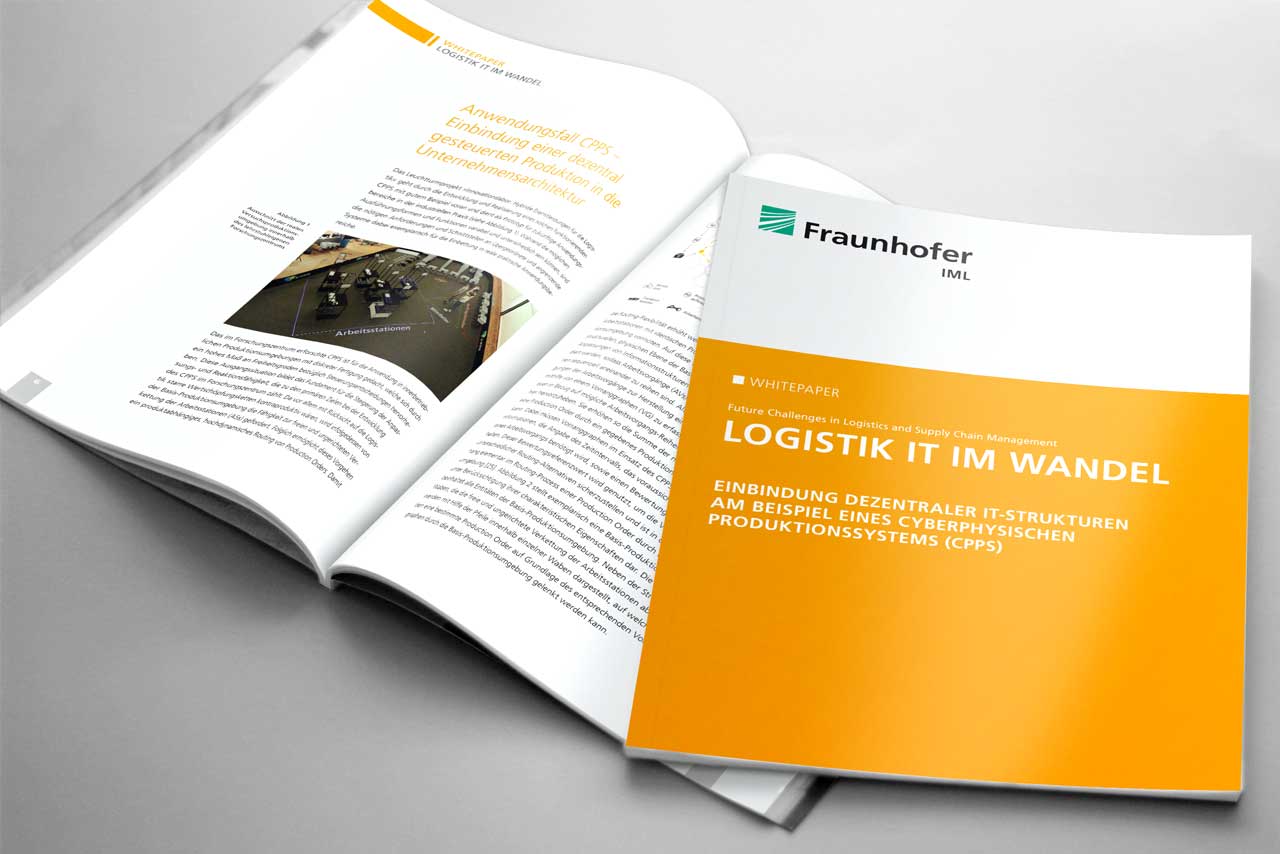Logistics IT is in a state of flux: Whereas large, monolithic software systems used to control the overall processes in the warehouse, in the company and in the supply chain, in recent years these have increasingly been supplemented and replaced by a variety of modular software packages. Key elements on the store floor are cyberphysical systems (CPS), which act autonomously, make decisions decentrally and thus strive for the current optimum in each case. In the new white paper »Logistics IT in Transition,« researchers from the Center of Logistics and IT now examine the requirements that arise from an autonomously acting manufacturing environment for higher-level and lower-level IT systems. In doing so, they highlight fields of action for the integration of a cyberphysical production system (CPPS) into the enterprise architecture. The whitepaper has been published in the series “Future Challenges in Logistics and Supply Chain Management” by Fraunhofer IML. The series addresses current challenges, highlights trends and focuses on novel technologies and business models.
In the white paper, the authors come to the conclusion that a rethink at management and IT level as well as an adaptation of the IT infrastructure are necessary for a comprehensive use of the advantages of CPPS in practice as well. The modular structure of a company’s IT system landscape will become even more prevalent in the coming years and will grow together beyond company boundaries to form a modular supply chain IT system landscape. In this context, topics such as common platforms, open source solutions and interfaces would have to be further researched, standardized and transferred into industrial practice.
Here you can download the whitepaper (pdf, 2 MB; german version only).




